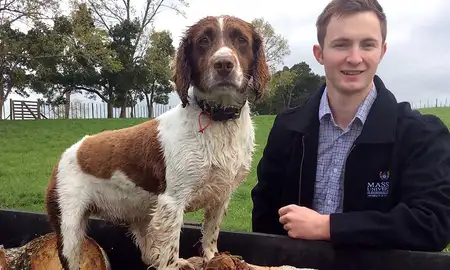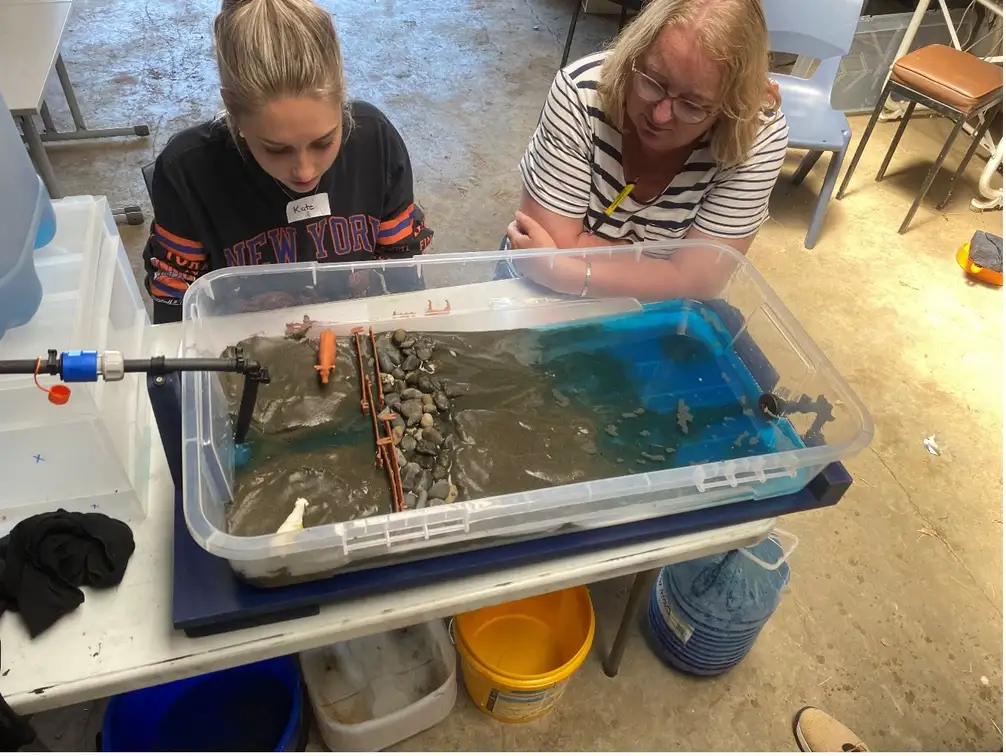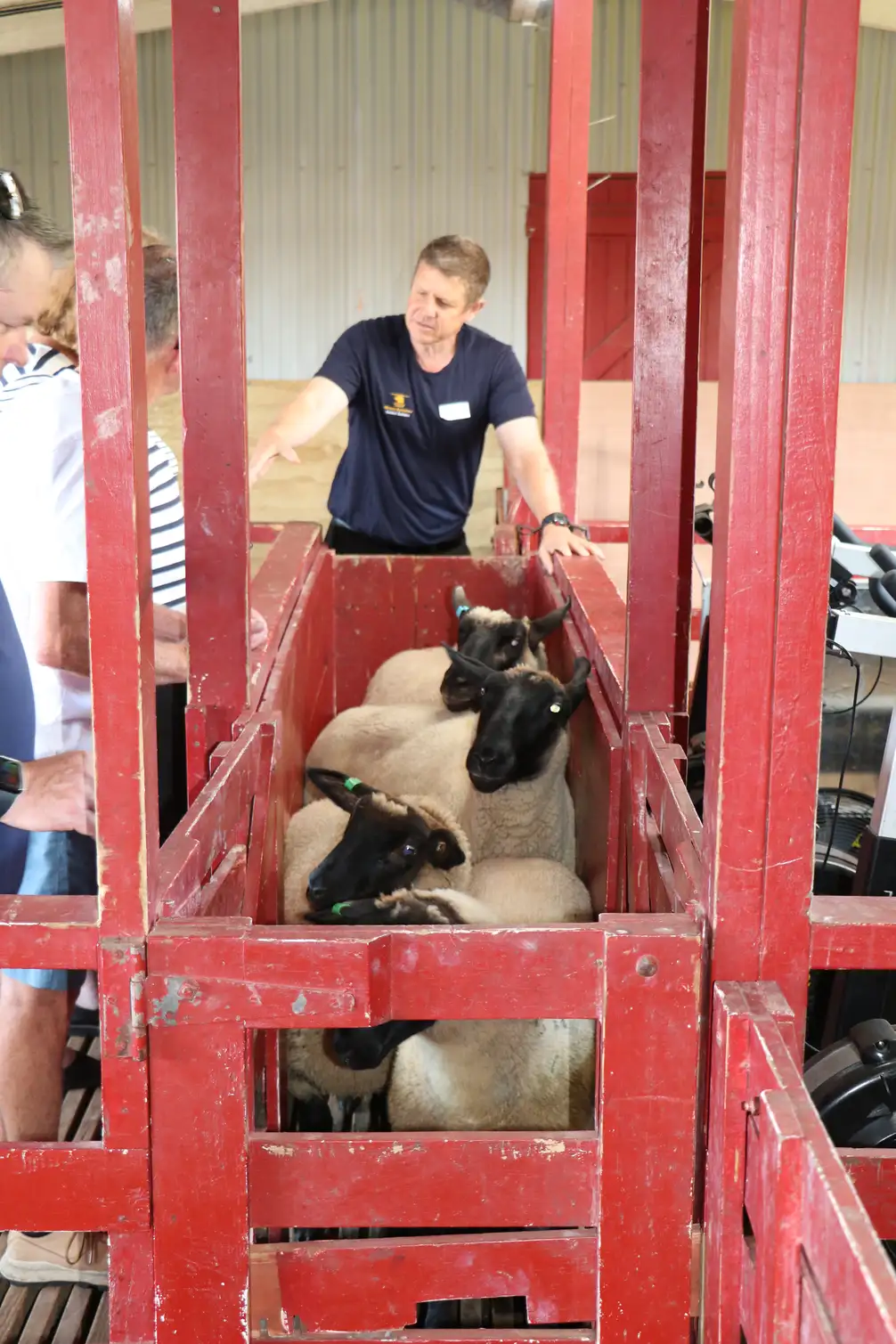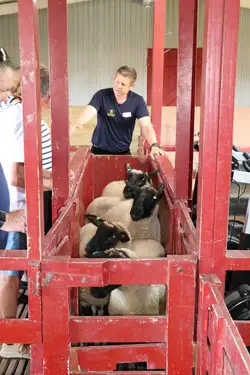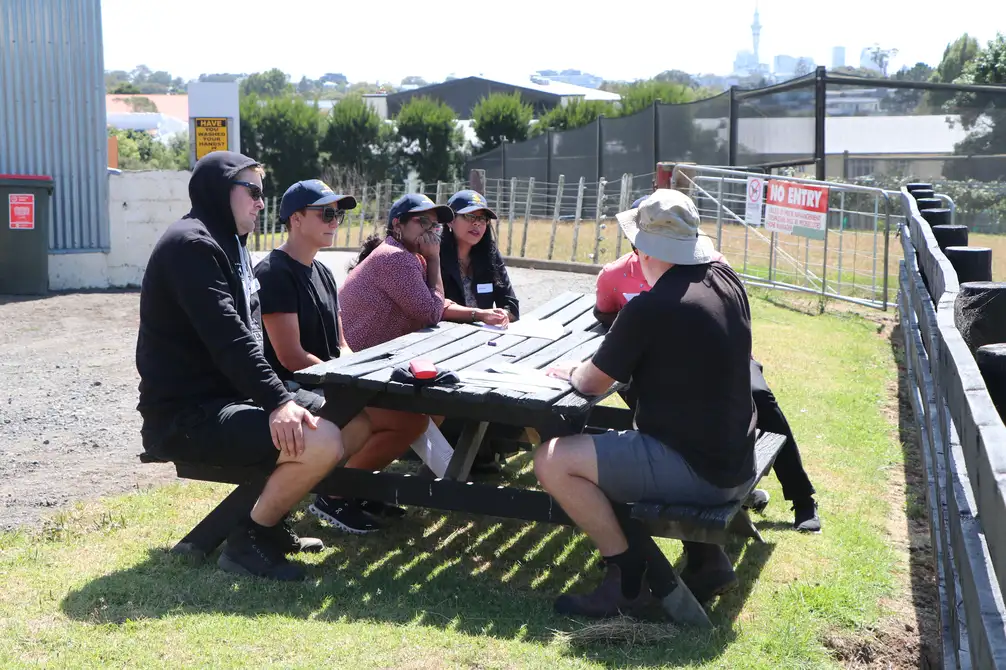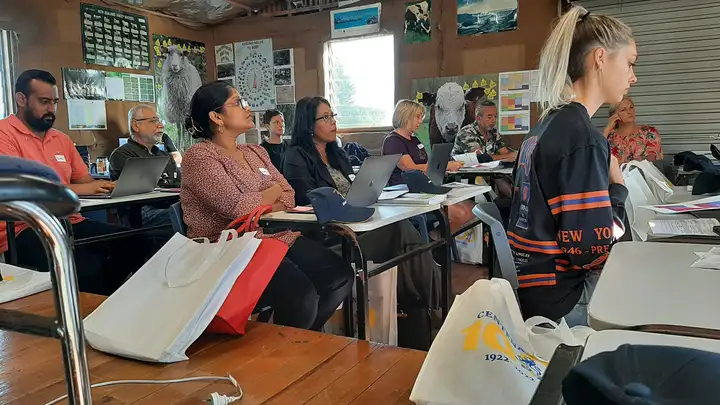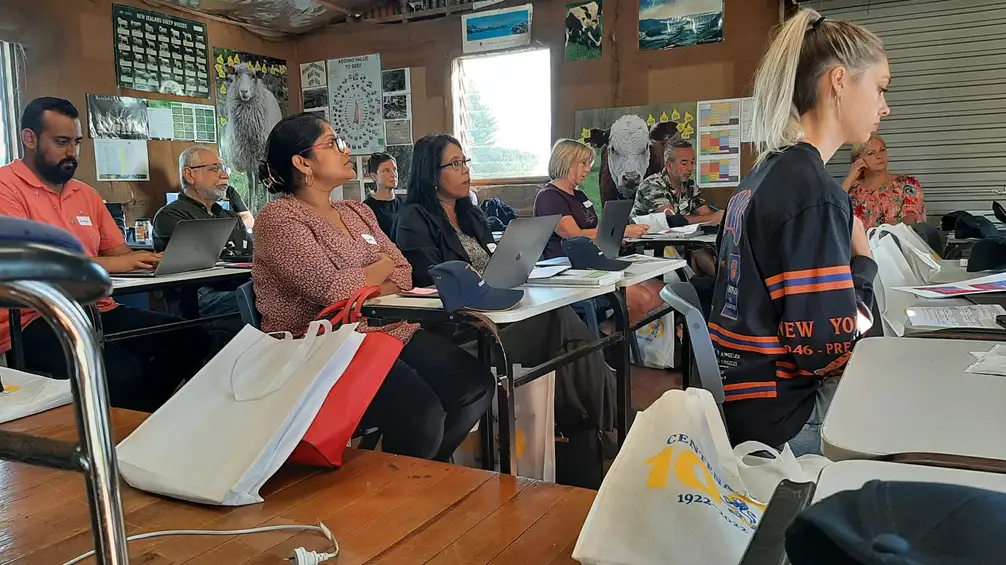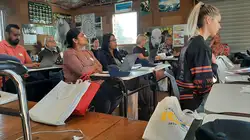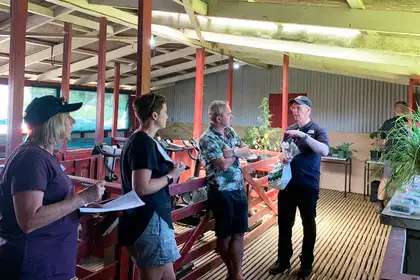
Senior Tutor Robert Southward talks some teachers through plant species identification.
Teaching young people about different primary industry concepts is an important educational piece when it comes to encouraging them to pursue a career in the field. The industry faces an ageing workforce, so attracting and training young people is vital.
That’s the message that staff from Te Kunenga ki Pūrehuroa Massey University’s School of Agriculture and Environment imparted to a range of North Island high school teachers who converged on Mount Albert Grammar School recently.
Massey staff took the teachers through an interactive day of learning, covering pasture experiments, nitrogen run-off, erosion, volcanoes and lava flows, plant species identification and animal body quality measurements. The activities all link to videos and exercise worksheets that the university makes available for the teachers to access online and use in their classrooms.
Head of School Professor Paul Kenyon says during the last 18 months the teaching team has worked closely with high school teachers to co-develop the teaching resources.
“Working with individual high school teachers and the Horticulture and Agriculture Teachers Association (HATA) has been positive for both groups. It has allowed the team to create new educational material that teachers need and can use, based on the science that Massey is undertaking,” he says.
Professor Kenyon adds that the HATA teachers are passionate about providing an educational experience that helps encourage young people into the primary industries, and the teacher insights help Massey staff ensure they are focusing on what’s important.
Dr Callum Rees, who took the teachers through erosion education, says erosion and loss of topsoil is one of the worst environmental issues faced in Aotearoa New Zealand.
“Cyclone Gabrielle alone is thought to have cost the Hawke’s Bay horticultural industry $1.5 billion from lost production, clean up and repair and re-establishment. To fully appreciate why erosion is such an issue in New Zealand, we first need to know about soil.
“Soil is made up of sand, silt and clay formed by the breakdown of rock into smaller and smaller particles by physical and chemical weathering. What sets soil apart from sediment is its biological component - it’s alive! One teaspoon of soil contains more living organisms than there are people in the world.”
Dr Rees explains that following a period of no rain, soils can continue to supply water to plants for days to weeks.
“This makes soil very important to farmers and the New Zealand economy as it allows us to harness water and nutrients to grow plants and animals for food and fibre. A lot of what you find on supermarket shelves relies on a farmer's ability to grow plants in soil, meaning soil is a vital resource that we need to survive.”
However, soil is a limited resource.
“Our best horticultural soils only make up a small proportion of our total land area. Increasing pressure to subdivide for urban development and lifestyle blocks is resulting in farmers being pushed off our best soils onto poorer quality land that requires higher inputs to achieve similar levels of production. This drives up the cost of production, which is passed on to consumers, who pay more for food at the shop,” Dr Rees explains.
“When erosion takes our topsoil and sends it down the river, we lose our ability to hold onto water and nutrients and begin to rely more heavily on fertiliser, increasing the risk of nutrient loss which is costly and can negatively impact the environment.”
While the best way to learn about erosion is to get out on a farm to observe it first-hand, Dr Rees says when this isn’t an option, the next best thing is to create a landscape model where you can experiment with processes of erosion.
“I built a stream table out of cheap Bunnings materials to create an erosion exercise for high school teachers. The aim was to provide them with a fun, informative way to teach their students about river erosion in the classroom.”
“We need our young people to learn about erosion so that when they enter the workforce as farmers, consultants, farm-advisors or regional council officers, they can help promote best management practices to prevent or minimise erosion. This will help future generations enjoy healthy rivers and grow enough food to satisfy domestic markets and drive the economy through exports,” he explains.
Mount Albert Grammar School Head of Agriculture Coadette Low says she’s looking forward to replicating the teachings in the classroom,
“This will be a great way for students to explore erosion and management options. It’s experiential learning, with the students getting hands-on and being actively engaged.”
Agriculture teacher Kate Caldwell concurs.
“It’s a great way for students to actually see what’s happening, which helps with their processing and understanding, instead of theory. It was a fun and engaging activity.”
Massey University has taught agriculture and horticulture degrees since 1927 and is the top-ranked university in New Zealand for agriculture. The subject is also consistently ranked in global university rankings.
Related news
School of Agriculture and Environment celebrates successful students within top ranked programmes
The School of Agriculture and Environment has named its top students of the year at their annual Agriculture, Horticulture and Environmental Science Awards Dinner last week.
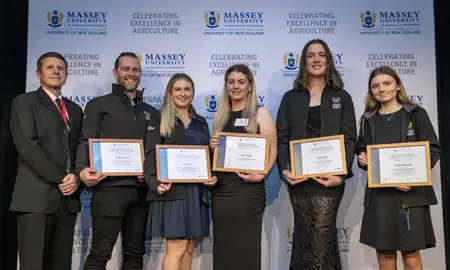
Scholarships awarded to encourage careers in agriculture
The School of Agriculture and Environment’s scholarship evening saw 94 students awarded with over $500,000 in financial support for their study.
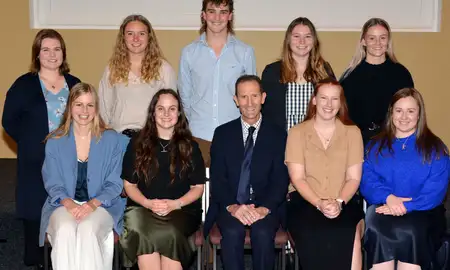
Top agriculture student shares secret of success
Bachelor of AgriCommerce student James Robertson is your classic jack of all trades, but rather than mastering none, he excelled in everything he put his hand up for.
